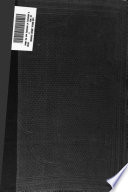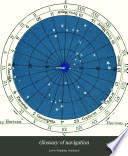 | William N. Griffin - 1838 - 206 pages
...reference has been made. Law of Reflection. When a ray is reflected at the surface of a medium, (1) The incident and reflected rays lie in the same plane with the normal to the surface at the point of incidence, and on opposite sides of it, (2) The angles which the incident and... | |
 | Charles Davies, William Guy Peck - 1855 - 628 pages
...point of incidence. It is a property of the incident and reflected rays that they make equal angles with the normal to the reflecting surface at the point of incidence. RE-GRES'SION POINT. [L rtgrcdiar, to return ; from re. and srcdior]. The same as cusp point, which... | |
 | G. R. Smalley - 1862 - 190 pages
...regularly refracted. 2. lam of Reflexion. — The angles of incidence and reflexion are equal ; and the incident and reflected rays lie in the same plane with the normal at the point of incidence, and on opposite sides of it. 3. Law of Refraction. — The sines of the... | |
 | Adolphe Ganot - 1865 - 524 pages
...called the point of incidence ; thus, D is a point of incidence. The angle which the incident ray makes with the normal to the reflecting surface at the point of incidence, is called the angle of incidence; thus, CD A is an angle of incidence. The plane -which passes through... | |
 | William James Rolfe, Joseph Anthony Gillet - 1868 - 554 pages
...angle bnm. The former is called the angle of incidence, and the latter the angle of reflection. Both the incident and reflected rays lie in the same plane with the perpendicular. If the mirror be turned, the direction of the reflected ray changes in such a way that... | |
 | Henry Watts - 1868 - 1170 pages
...reflection must take place so that the reflected ray lies in the same plane with the incident ray, and the normal to the reflecting surface at the point of incidence, and that the incident and reflected rays make equal angles with the normal. That radiant heat is thus reflected... | |
 | Adolphe Ganot, William Guy Peck - 1871 - 510 pages
...the point of incidence ; thus, .J) -is a point of incidence, The angle that the incident ray makes with the normal to the reflecting surface at the point of incidence, is called the angle of incidence; thus, 01) A is an angle of incidence. The plane that passes through... | |
 | William Garnett - 1876 - 180 pages
...point of incidence, and on opposite sides of it. (2) The incident and reflected rays make equal angles with the normal to the reflecting surface at the point of incidence. 153. In the experiment described in Art. 147, we found that on substituting a rock-salt prism for the... | |
 | William Garnett - 1878 - 236 pages
...point of incidence, and on opposite sides of it. (2) The incident and reflecting rays make equal angles with the normal to the reflecting surface at the point of incidence. 235. In the experiment described in Art. 229, we found that on substituting a rock-salt prism for the... | |
 | John Bradley Harbord - 1883 - 472 pages
...makes with the normal is called the angle of reflection. The experimental laws of reflection are— (1) The incident and reflected rays lie in the same plane with the normal at the point of incidence, and on opposite sides of it ; (2) The angles of incidence and reflection... | |
| |